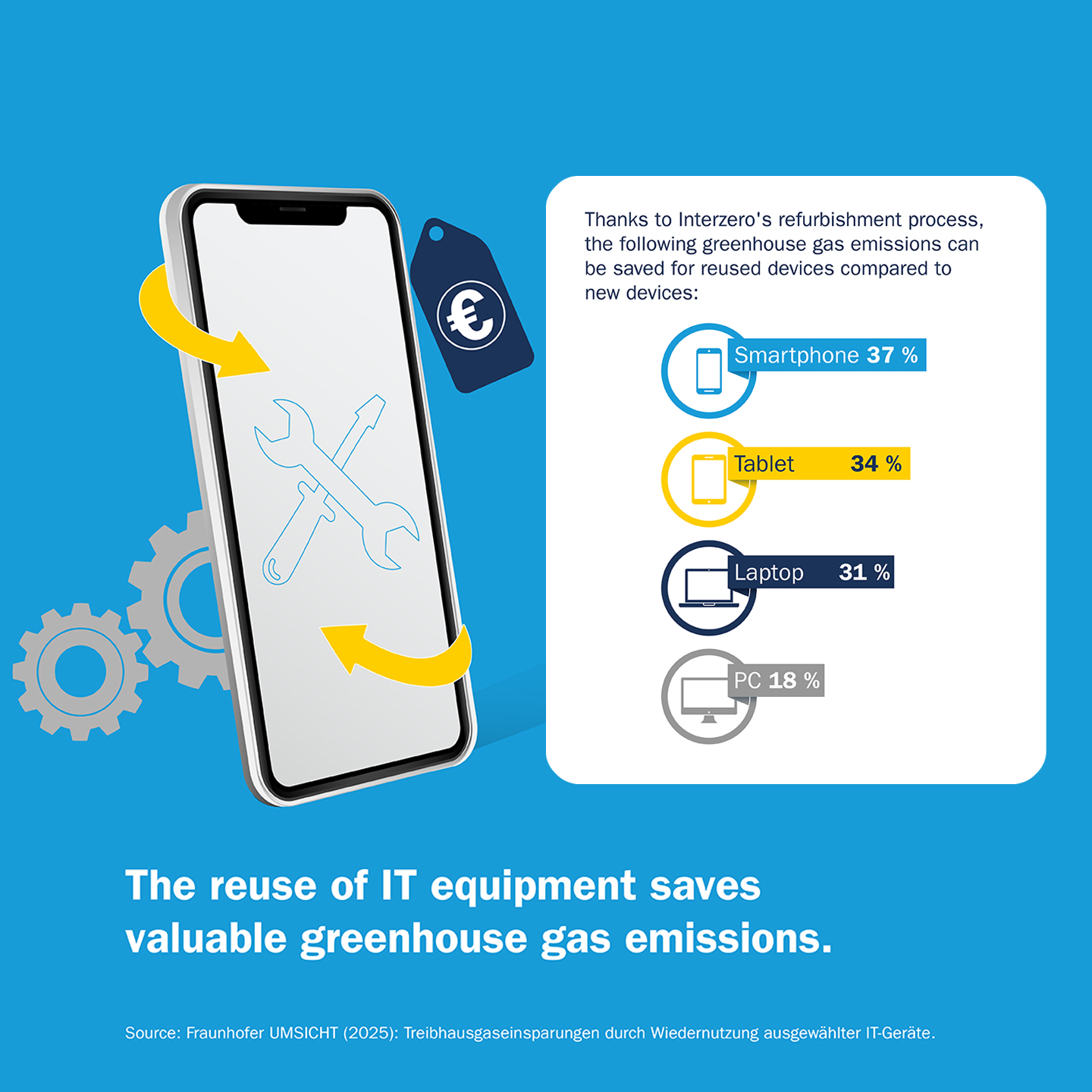Study
Reducing greenhouse gases with used IT devices
Fraunhofer UMSICHT investigated for Interzero how sustainable the use of used IT equipment is. The results show that giving smartphones, tablets and other devices a second life can reduce greenhouse gases by up to 37 percent.
How sustainable is the use of used technology really? The circular economy service provider Interzero and Fraunhofer UMSICHT investigated this question. The result: Above all, the recycling of used smartphones makes a decisive contribution to avoiding greenhouse gas emissions.
The study "Greenhouse gas savings through the reuse of selected ICT devices" focuses on current data on the environmental impact of reused IT devices and examines the ecological footprint of smartphones, tablets and other devices in conventional and extended use. The study focuses in particular on greenhouse gas emissions.
Reused smartphones offer the greatest savings potential
The results once again highlight the relevance of circular solutions in the electronics sector: depending on the type of device, reuse or refurbishment can save between 18 and 37 percent of greenhouse gas emissions. At 34.7 kg of GHG emissions, the savings achieved through extended product life are particularly high for smartphones. Compared to a single conventional life cycle, the reuse of a smartphone causes around 37 percent fewer GHG emissions. Reused tablets save around 34 percent (59.4 kg of GHG emissions). When a laptop is refurbished, the savings are around 31 percent (107 kg) and for desktop PCs around 18 percent (163 kg) compared to the conventional life cycle.
"The study results clearly show that sustainable business practices and economic opportunities can go hand in hand. Refurbishment and reuse create new value-added potential while also making a significant contribution to protecting our planet," explains Philipp Rittershaus, research associate at Fraunhofer UMSICHT.
About the study
The study "Greenhouse gas savings through the reuse of selected ICT devices" is based on a life cycle analysis that takes into account all phases (resource extraction, production, distribution, use, disposal) of the product life cycle, as well as primary data from Interzero on all processing costs. Two usage scenarios were analyzed: reuse (taking into account further steps such as processing, transport and a second phase of use) and refurbishment (taking into account the replacement of individual components in addition to reuse). The savings determined are based on the respective recycling processes used by Interzero. The product life cycles of smartphones and tablets were analyzed with a focus on the reuse scenario, and those of notebooks and desktop PCs with a focus on the refurbishment scenario.
Last modified:
 Fraunhofer Institute for Environmental, Safety and Energy Technology UMSICHT
Fraunhofer Institute for Environmental, Safety and Energy Technology UMSICHT